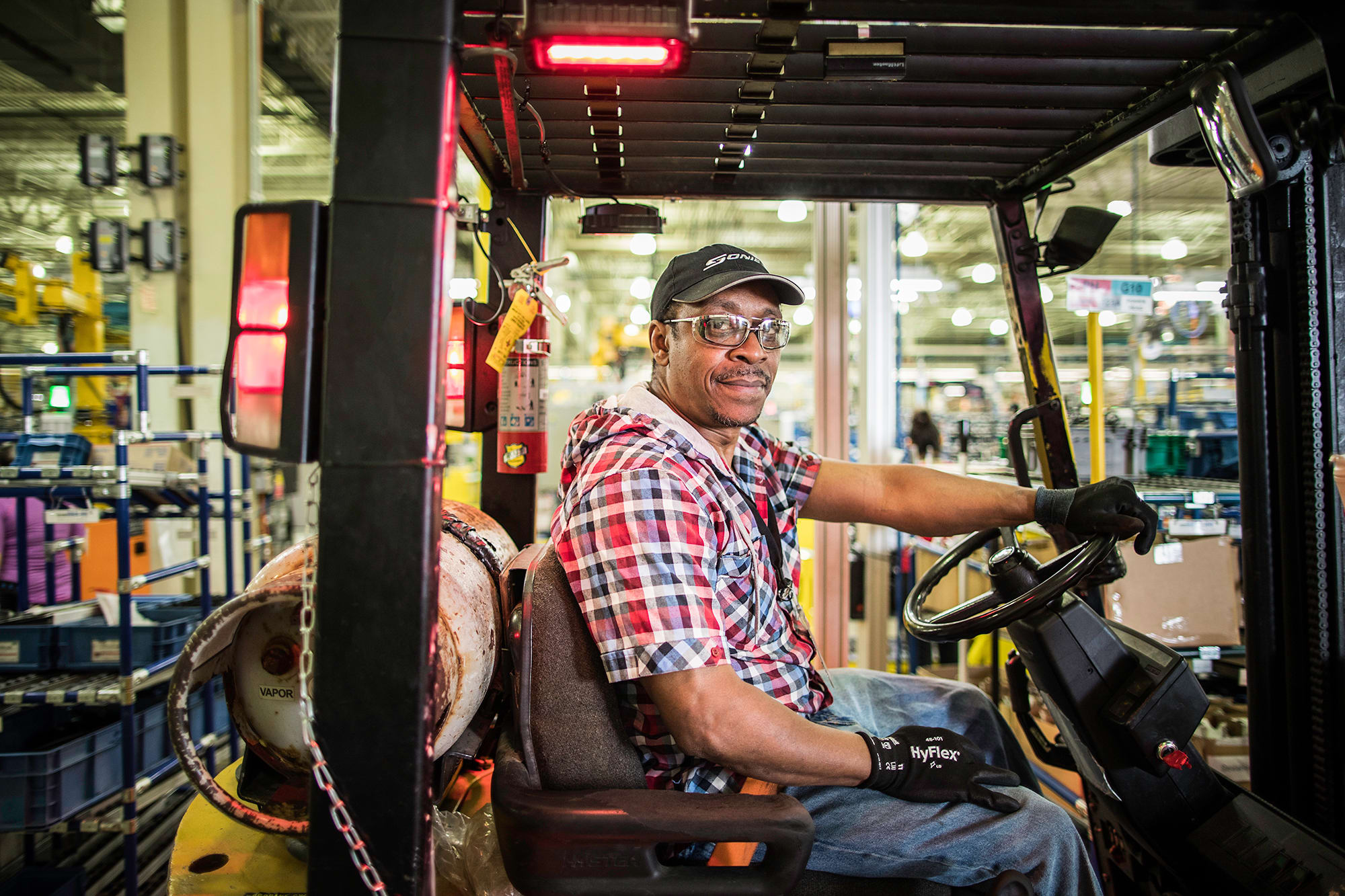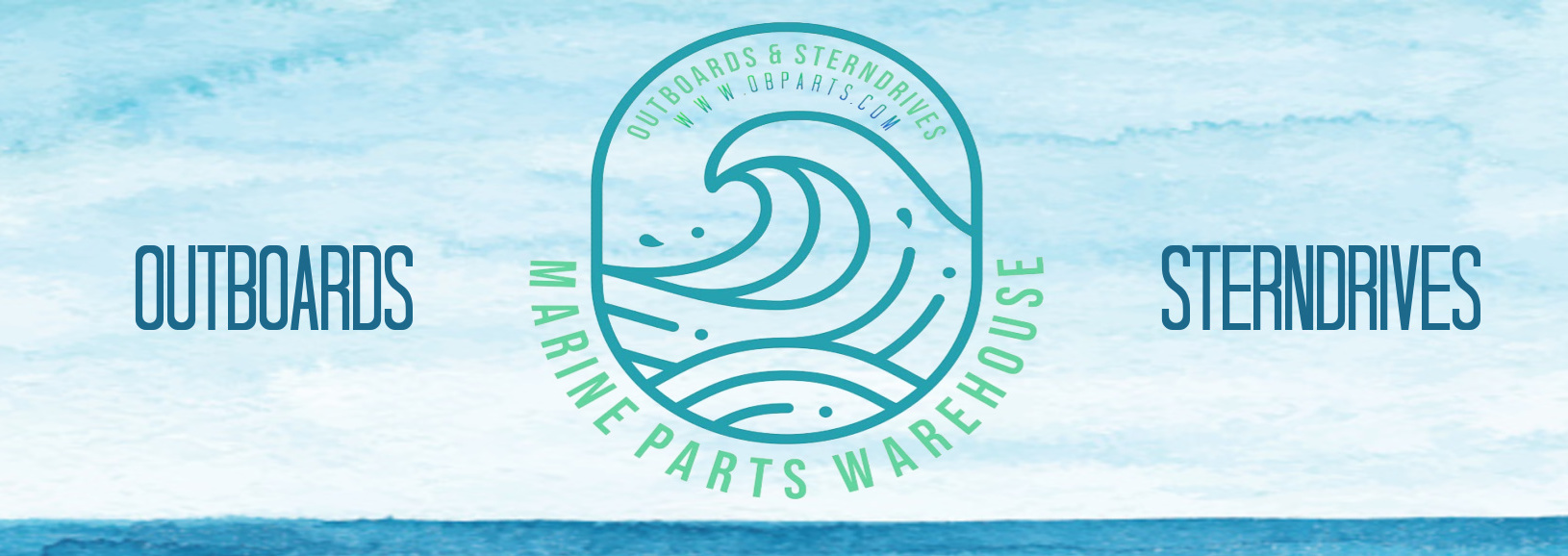Evinrude: The End of an Era
Posted by Pim Van Hemmen / Brian Whiteside on 14th Dec 2023
It was as if outboard-powered boats everywhere came to idle last night and a quiet calm descended upon our waterways after news broke that BRP is ceasing production of Evinrude outboards.
According to BRP President and CEO José Boisjoli: “Our outboard engines business has been greatly impacted by COVID-19, obliging us to discontinue production of our outboard motors immediately. This business segment had already been facing some challenges and the impact from the current context has forced our hand. We will concentrate our efforts on new and innovative technologies and on the development of our boat companies, where we continue to see a lot of potential to transform the on-water experience for consumers.”
According to BRP, they have signed an agreement with Mercury Marine which will power their boat lines moving forward, including Manitou pontoon boats as well as Alumacraft and Telwater bay boats.
News of closures and consolidations during a financial crisis is not uncommon, yet this announcement seemed to cut the boating community deeper than most. Perhaps it’s because of the builder’s storied legacy. Maybe it’s because Evinrude has powered so many of our memories on the water. Or maybe it’s because we know a lack of competition in the outboard market hurts everyone.
I’m reminded of one of my favorite quotes from the 1993 classic, Sandlot, the one where Babe Ruth visits Benny in a dream and says, “Remember kid, there’s heroes and there’s legends; heroes get remembered, but legends never die.”
A True Original
In the early 1960s when I was a kid, my family owned a cottage—or what we used to call a “camp”—on a spring-fed lake in the Adirondack mountains. The place was a small, clapboard affair that had been handed down to us by my great grandfather Charlie. Grandpa Charlie was an interesting old guy. During his youth, before settling down to a lifetime of guiding “sports” on and around the lake via a stable of canoes, rowboats and small, inboard-powered skiffs, he’d spent several years adventuring out West, doing everything from running the Big Muddy in a raft to living cheek by jowl with the iconic Western painter and sculptor Frederic Remington in a sod hut in the Dakotas. He’d had the opportunity, family legend had it, to attend Harvard University for four years, all expenses paid, but had turned the offer down, deciding to catch the last of the American frontier instead."My family had a stable of boats on the lake as well. And the queen of the fleet was a riveted-aluminum speedster with a rakish, multi-hued, 40-hp Lark II Evinrude outboard on her transom. And man, would that baby go! That Lark II, after all, was the biggest motor on the lake at the time. And my dad revered it; in fact, the whole family did. Back then, Evinrude—and its parent company Outboard Marine Corporation (OMC)—were the big dogs in our neck of the woods. Not only was OMC selling more outboards than anybody else in the western Adirondacks, it was selling a raft of other products that were rather Adirondacky as well, like snowmobiles and chainsaws.
Ask my dad and he’d tell you, Evinrude was tops—the best money could buy, the absolute essence of top-shelf engineering and manufacturing, with major components like crankshafts, pistons, carburetors and electrics all created and assembled in the good ol’ USA, under quality-assurance mavens with eyes like hawks. And should, by some inconceivable stretch of the imagination, anything ever go wrong with his Evinrude Lark II, dad had a dealer right across the lake.
I’d say I loved that Lark II as much as dad did. To this day, I can recall with crystal clarity the allure of its sweet, internal-combustion scent as we idled around the edges of Wintergreen Bay. And I can recall just as clearly the wild, steady, wonderful thrum it made at wide-open throttle as I zoomed across the open water of the lake proper, with a delicious, frothy-white contrail stretching out behind and the wind in my face. To say that that trusty old Evinrude figured as a guiding force in my life—a sort of governing presence—is no exaggeration. Not even close.
The Ice Cream Story
Whether you own a boat, use a boat, build boats or just hang around boats for the heck of it, you’ve undoubtedly heard about how Ole Evinrude invented the outboard motor. You remember how the tale goes, right? The year is 1906, it’s Sunday afternoon, Ole’s a young, romantically inclined, Norwegian-born mechanical savant with some serious machine-shop expertise, an interest in horseless carriages and a potentially lucrative deal lined up with the U.S. government to build a passel of small, portable internal-combustion engines for reasons, to my knowledge, unspecified.
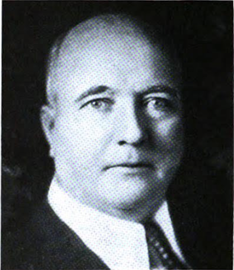
He and his fiancé Bess Cary are picnicking on an island in the middle of Wisconsin’s Okauchee Lake when Bess announces she’d like some ice cream. So, off goes Ole, ever the dutiful prospective husband, in a rowboat.
But on the five-mile return trip in sweltering 90-degree heat, he is constrained to turn inventive. Hmmm, he thinks to himself, too bad I don’t have one of my little engines somehow propelling this sucker. It’d be way easier and way faster than these oars. This ice cream is gonna turn into a puddle of soup before I get back to the island!
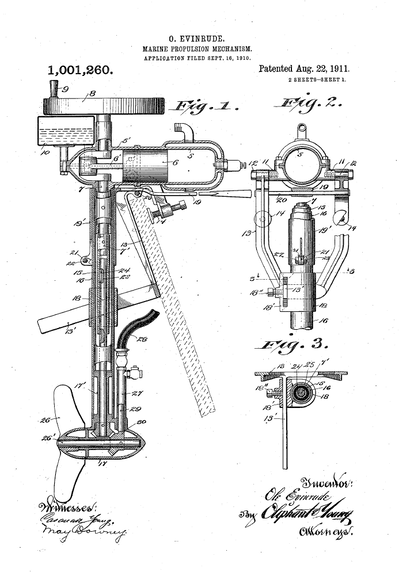
The conclusion of the tale’s a matter of record. Three years later, Ole sells 25 outboards—his entire inventory at the time—in one day and takes orders for 10 more. Each of the little jewels generates 1.5 horsepower, weighs roughly 62 pounds and costs $62. But hey, the question arises now and again: Is the ice cream story really true? Well, for the most part, yes—it seems that way.
But over the years, its veracity has been challenged. For example, a few decades ago, if you wanted to really enrage Carl Kiekhaefer, the founder of Mercury Marine—Evinrude’s main competitor throughout most of the 20th century—all you had to do was mention Ole Evinrude, rowboats and Ole’s supposed ice cream-inspired invention.
More to the point, in the early ’50s, Kiekhaefer, who as a young engineer was fired from Evinrude “for frequent, disquieting and brazenly insubordinate arguments concerning design and product development,” hired investigators to dig into the ice cream tale.
Then afterwards, he claimed they’d thoroughly debunked the darn thing and specifed a rip-roaring ad campaign to make sure the outboard-buying public heard the truth, Mercury-style. A guy named Waterman, Kiekhaefer always maintained, was the real inventor of the outboard.
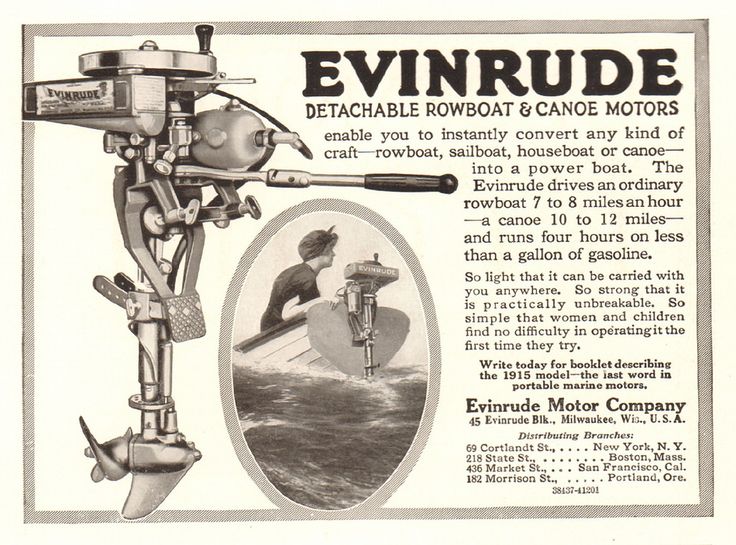
Rise and Fall of an Empire
After founding Evinrude Motors of Milwaukee in 1907, Ole and Bess (who was the author of the catchy advertising slogan “Don’t Row! Throw the Oars Away!”) built the company into a commercially viable operation that eventually began to thrive despite business-related machinations, mergers, non-compete clauses and buyouts. Innovation was always key, even as the country slogged into the Great Depression. Industry firsts included outboards with electric starters, folding shafts and, eventually, a two-stroke configuration that generated a thundering 40-hp.
In 1933 Bess Evinrude died prematurely and a devastated Ole died the following year. (History generally contends that Ole maintained a sense of optimism and generosity right up until the end, often quietly giving cash to employees and friends suffering Depression-related hard times.) His son Ralph became president of Outboard Motor Corporation, which would eventually become Outboard Marine Corporation.
The next three decades brought a sort of super-prosperity. During World War II, Evinrude and parent company OMC switched from manufacturing outboards to the production of bomb fuses, aircraft engines and firefighting equipment. The ’50s saw a spirited return to outboards with the first mass-produced, die-cast aluminum product ever marketed—a four-cylinder, 50-hp powerhouse.
And then, as the ’60s and early ’70s arrived, Evinrude and OMC began selling thousands of outboards globally and making money hand over But with growth and prosperity came bad business decisions. In 1960, while riding high in terms of profits and reputation, OMC began adding a slew of major manufacturing facilities to its portfolio while diversifying into unrelated manufacturing realms with a riverboat gambler’s insouciance. This was especially dangerous considering that OMC was already in full-throated competition with itself, fielding outboards from both Evinrude and sister-company Johnson, products that were stylistically different but essentially the same under the cowling.
The financial drain associated with supporting separate manufacturing facilities for two virtually identical products—along with separate dealers, marketing departments and distribution networks—was immense. And the rivalry that grew up between the employees who worked for the two, separate product lines ultimately became so intense that a sort of forgetfulness set in concerning competitors (like Mercury and Japan-based Yamaha) threatening from outside the fold.
Additionally, due to mismanagement and the inefficiencies inherent in an exceptionally far-flung empire, OMC was having trouble with the boat businesses it had leveraged itself into in order to guarantee transoms for its motors. Top-shelf brands like Chris-Craft, Four Winns and Donzi began losing money. Non-marine products, like snowmobiles, golf carts, chainsaws and motor scooters, were falling short as well.
Continuing problems hallmarked the ’80s and ’90s. OMC persisted in building new plants, both stateside and overseas, while high-profile engineering projects failed. For starters, the introduction of outboard brackets from companies like Armstrong and Gill deep-sixed the so-called OMC Sea Drive—basically an outboard secured to an overly complicated mounting device that was supposed to obviate transom wells and facilitate lifting lower units free of the water. Then a venture into the stern-drive market, where Volvo and Mercury already held numerous patents, proved commercially disastrous. And finally, costs associated with environmental cleanups at facilities in Wisconsin and unionized labor disputes began skyrocketing.
Nevertheless, as the new millennium approached, OMC could still claim a third of the entire boat and engine market in the United States, according to BoatUS statistics at the time, and was selling more than 100,000 units a year.
The Final Straw
It was a lethal duo that finally did OMC in—the Environmental Protection Agency and Ficht two-stroke direct injection technology, or DFI. In 1996, with the EPA calling for cleaner, more fuel-efficient outboards, OMC rushed to market with a new two-stroke outboard system called Ficht, after a principal of the German firm that helped develop it. OMC’s honchos were running scared at the time. Competitor Mercury was breathing down their necks with Merc’s own version of two-stroke DFI. And Yamaha already had a few relatively clean-burning, low-horsepower four-strokes on the market.
In 1997, Salomon Brothers was hired to explore the possibilities of an OMC merger or buyout. One year later, financier George Soros and Greenway Partners took the corporation private via a $373 million leveraged deal.
When OMC filed for bankruptcy only two years later, Evinrude—a legend on the water for well over a century—went down amid a chaotic scramble that would besmirch a grand marque and generate one of the darkest episodes in all of recreational marine history.
Saviors from the North
On December 21 of 2000, remembers George Broughton, who was head of engineering for OMC when the bankruptcy took place, “the guys from Greenway Partners called us all in and told us it was over. OMC was done and they were not going to pay us anything. No insurance, no retirement, no nothin’. Not even a thank you.”
What the corporation subsequently did to its dealers and distributors was, in a way, even worse than what it did to its employees, many who’d been on the job for decades. Well before bankruptcy plans were announced, OMC used the promise of lucrative rebates to push an immense inventory of products into showrooms across America, much of it Ficht-based. Unsuspecting business partners were encouaged to buy, buy, buy. Then, once the OMC folded, hundreds of dealers and distributors were left holding the bag, their now-inflated inventories no longer backed by the manufacturer and the promised rebates completely forgotten. In addition, thousands of end-users were left holding the bag as well, with no warranty protection when outboards failed, which they were doing with a vengeance.
A procession of possible buyers began visiting OMC’s stalled facilities in Wisconsin. Representatives from Polaris, John Deere, Mercury Marine and other entities stopped by to kick the tires.
“A few days after the official announcement,” Broughton continues, “I was sitting around the house trying to figure out which bill not to pay when I got this call from these guys up in Quebec. They were interested, they said, in the Ficht project we’d been working on just before the bankruptcy. They wanted me and some of the other engineers to come down to the plant to show them what we’d been up to and so we did. Little did I know at the time that, with that little show-and-tell, we were selling Evinrude to BRP.”
Of course, Bombardier Recreational Products (BRP), is a spinoff of Bombardier, the Canadian aerospace and transportation multinational famous for building airplanes and fast trains. And not only did BRP purchase Evinrude and add it to its array of recreational products (like Ski-Doo, Sea-Doo and Rotax), it did something else—a very good deed. In an apparent effort to restore public trust in the Evinrude brand, BRP instituted a product recall of defective 200- and 225-hp outboards. Reportedly, more than 11,000 engines were involved.
On May 27, 2020 it was announced that BRP would immediately discontinue the manufacturing of all Evinrude outboard motors. Bombardier said COVID-19 was too much to overcome the builder’s challenges. It marks the end of an era. The announcement to discontinue manufacturing was so shocking that one of Wisconsin’s newspapers said it was akin to Ford announcing it would no longer build automobiles.
The announcement leaves Evinrude’s global workforce of 650, most of them in Sturtevant, Wisconsin, out of work. Bombardier says it will continue to offer support to Evinrude owners.
Unlike its competitors Yamaha, Mercury and Suzuki, Evinrude never made the switch to four-stroke engines. When environmental regulations appeared to make two-stroke engines an endangered species, Evinrude responded with its E-TEC engines. They were lighter than their four-stroked competitors. Despite that, four-stroke outboards continued to gain market share and have dominated the industry for the past two decades. A more recent Evinrude development, the E-TEC G2 was supposed to give the manufacturer continued longevity, but it was not enough.
Parts?
Marine Parts Warehouse proudly carries OEM and aftermarket parts for Johnson and Evinrude outboards.
Gallery: Evinrude the Last Days












